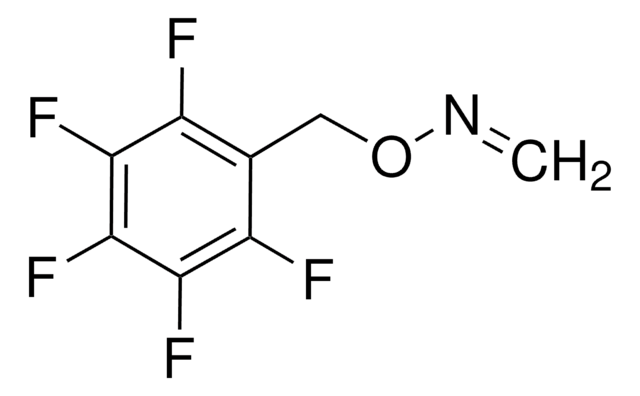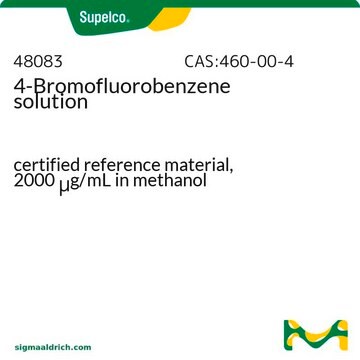194484
O-(2,3,4,5,6-Pentafluorobenzyl)hydroxylamine hydrochloride
≥98%
Synonym(s):
PFBHA·HCl
About This Item
Recommended Products
Assay
≥98%
form
solid
mp
227 °C (subl.) (lit.)
solubility
water: soluble 50 mg/mL, clear to slightly hazy, colorless
SMILES string
Cl.NOCc1c(F)c(F)c(F)c(F)c1F
InChI
1S/C7H4F5NO.ClH/c8-3-2(1-14-13)4(9)6(11)7(12)5(3)10;/h1,13H2;1H
InChI key
HVMVKNXIMUCYJA-UHFFFAOYSA-N
Looking for similar products? Visit Product Comparison Guide
Application
- In the preparation of oximes of steroids-bearing keto group.
- As a derivatization reagent in the determination of thromboxane B2, prostaglandins, amygdalin, and a variety of aldehydes, ketones, and acids.
Storage Class Code
11 - Combustible Solids
WGK
WGK 3
Flash Point(F)
Not applicable
Flash Point(C)
Not applicable
Personal Protective Equipment
Certificates of Analysis (COA)
Search for Certificates of Analysis (COA) by entering the products Lot/Batch Number. Lot and Batch Numbers can be found on a product’s label following the words ‘Lot’ or ‘Batch’.
Already Own This Product?
Find documentation for the products that you have recently purchased in the Document Library.
Customers Also Viewed
Our team of scientists has experience in all areas of research including Life Science, Material Science, Chemical Synthesis, Chromatography, Analytical and many others.
Contact Technical Service








